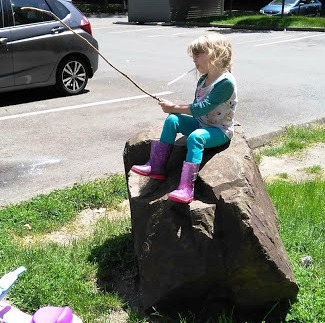
Part 2
of the wonderful experience I had with my Colorado grands in the summer of 2012, as we embarked on our chemistry adventure.
The adult books we got from the library had hundreds of pictures of crystals with very long names. Ashley worked on sounding out dozens of them. We found an amazing picture that showed crystals that were transparent, translucent, and opaque. Wow, a follow-up to the ‘mini conversation’ we had had earlier. We spent a few minutes selecting items from the library that fit each description. Windows were transparent, colored glass was translucent, and the door frames were opaque (sorta).
We collect rocks, we wear rocks, and we eat rocks!
We saw a picture of a rock collection in an egg carton. Right away, they began discussing where we could go to find good rocks to make our own rock collection. The girls thought it would be fun to find the rocks and then figure out if they were igneous or sedimentary.
There was a chart in both the adult books and the kids’ book showing the softest rock, talc, and the hardest rock, diamond. They couldn’t believe there were ground-up rocks in body power and that wedding rings contained rocks. We read a book on the history of salt, which is a crystal. Ashley and Lizzy thought it was funny that we eat a rock, of sorts, on our food.
We were at the library poring over the books for about an hour and a half. When it was time to go, Lizzy said, “Grandma, shouldn’t we take some of these books home so we can look at them some more?” It was Saturday afternoon, a beautiful day. They were on vacation at Grandma’s. The neighbor girl they loved to play with was home. Yet here were a six-year-old and an eight-year-old diligently learning about rocks and crystals. They were absorbed in the information. It was fun. They LOVED it.
On the walk home from the library, the girls were busy searching the ground for specimens to add to the rock collection they planned on making. When we got home, our sugar crystals had already begun to form. It was exciting. We scooped a few out and sampled them. Yummmmm.
While I was making dinner, which was peanut butter and honey sandwiches, we noticed that the honey had formed some sugar crystals. The girls compared them to the crystals forming in their “sugar jars”. We discussed the fact that you can melt sugar and honey crystals by heating them, but that it would take a much higher temperature to melt quartz crystals.
Books over scooters. What!!
 Later, I found Lizzy and Ashley sitting at the bottom of the stairs, looking at the books they brought home from the library. They had originally gone out to ride their scooters, but the books were so compelling that they never made it to the driveway. They were comparing the crystals in each other’s books, chatting away about the shapes, sizes, and colors.
Later, I found Lizzy and Ashley sitting at the bottom of the stairs, looking at the books they brought home from the library. They had originally gone out to ride their scooters, but the books were so compelling that they never made it to the driveway. They were comparing the crystals in each other’s books, chatting away about the shapes, sizes, and colors.
When I went to check on them next, they had finally made it to the driveway and were buzzing around the parking lot on their scooters. Ashley hollered to me and said, “Grandma, we are finding crystals.” Lizzy asked me, “What are those people called who dig and look for rocks?” “Miners”, I replied. Then Lizzy said, “We could become miners, Grandma, and find crystals.” Ashley said, “I told her we could be scientists and study crystals.” Then she thought a moment, “Yeah, we could be partners finding and studying crystals.” I realized that their imaginative play that evening had centered on what we had learned during the day. When that happens, you know learning has been impactful.
Before bed, we read another children’s book about rocks, which reminded us of all the new words and facts we had learned. They were excited for the coming day. We planned to use the hardness scale and scratch chalk with a penny. Chalk is a 1 on the hardness scale, and a penny is a three. We had decided to collect 10 rocks for their new collection and determine if they are igneous, sedimentary, or metamorphic. The activities we accomplished on this special visit weekend could be spread out over several weeks for your children. It doesn’t need to take up an entire weekend. 🙂
The Result
This is the result you want when you see a Spark and respond. You want to see enthusiasm for the topic and excitement in the learning process. You want the learning to carry over into play and life. Recognizing a Spark and then responding are skills that any adult can learn. They facilitate a parent’s ability to inspire their children and help them feel excitement when learning new things. We had a wonderful adventure. It was fun.
They don’t know everything about volcanoes and how rocks and crystals are made, but what they do know, they will remember.
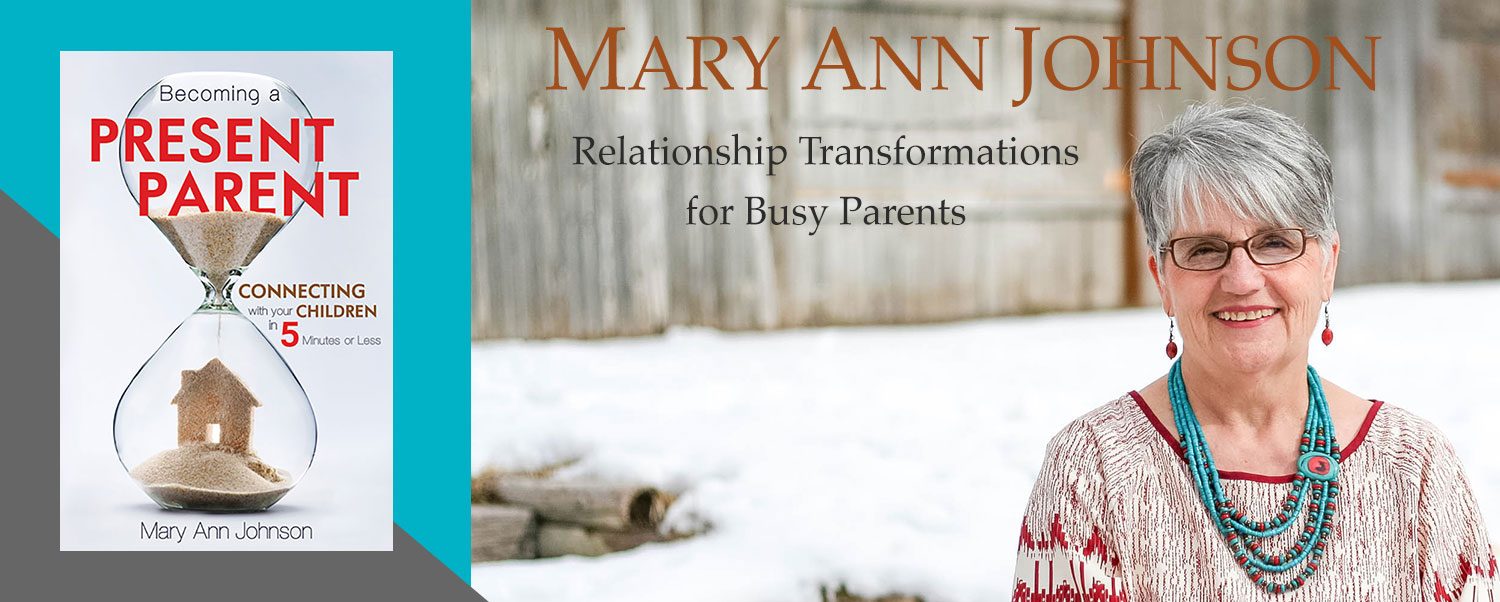
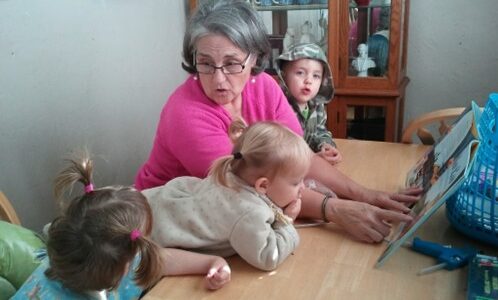
 One day in 2011, I found the most amazing book at the library!!! I happened across it accidentally. It was about Leonardo Da Vinci and the amazing visions he had. But that wasn’t all. The book showed how, in time, all his inventive ideas were created by other people and who those people were. Oh my gosh, I wanted to share this with my grands.
One day in 2011, I found the most amazing book at the library!!! I happened across it accidentally. It was about Leonardo Da Vinci and the amazing visions he had. But that wasn’t all. The book showed how, in time, all his inventive ideas were created by other people and who those people were. Oh my gosh, I wanted to share this with my grands. Our Super-duper Rocket-propelled Robot
Our Super-duper Rocket-propelled Robot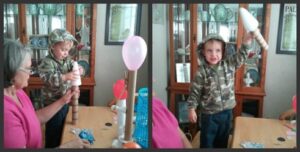
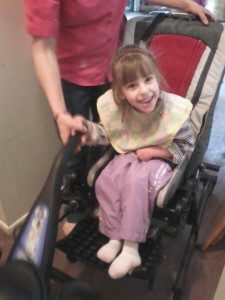
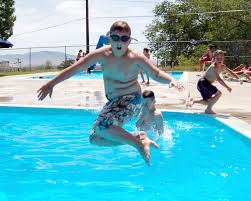
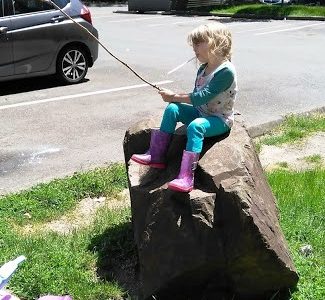
 I can remember being four years old, living in sunny CA. I had two sisters younger than me and we were all a year apart. I can see us playing on the front stoop of our home. We were pulling dead pine needles off of the Christmas tree to put in our mud pie cakes.
I can remember being four years old, living in sunny CA. I had two sisters younger than me and we were all a year apart. I can see us playing on the front stoop of our home. We were pulling dead pine needles off of the Christmas tree to put in our mud pie cakes.